Yes – coyotes do eat cats.
In areas where coyotes are particularly prevalent Coyote attacks on cats are not uncommon.
Thankfully there is plenty you can do to minimise the risk.
Due to urban expansion there is much more contact between household pets and coyotes. Plus, given the fact that both are nocturnal hunters, encounters between the two are almost inevitable and cats will generally come off worse.
Contents
How To Keep Your Cat Safe From Coyotes:
- Keep your cat inside at night.
- Construct protected cat runs for exercise.
- Use a coyote deterrent.
- Use animal-proof garbage cans.
- Don’t leave any type of pet food outside.
– Scientific name: Canis latrans
– Size: smaller than the average wolf
– Weight: males 18-44 lbs females 15-40 lbs
– Diet: carnivorous
– Habitat: North America and Mexico, but they have expanded into Central – America and as far south as Panama.
Statistics on Coyotes Attacks On Cats
There isn’t a national database pertaining solely to coyote attacks on domestic cats.
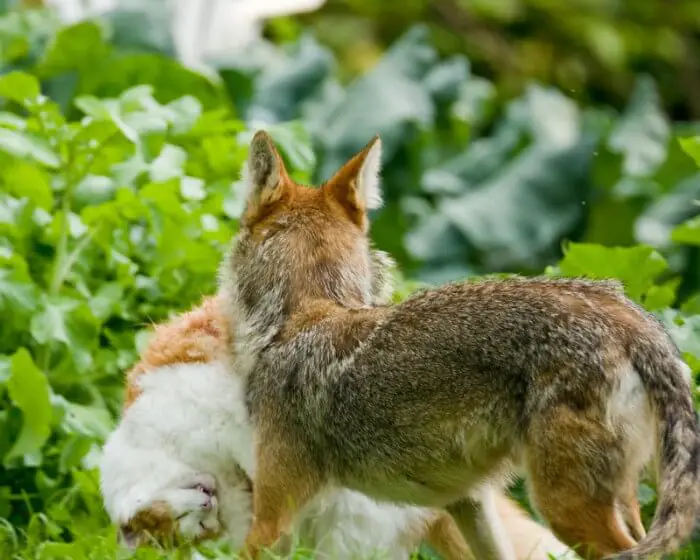
Cat attacks or kills are lumped together under the umbrella heading of household pets, although coyotes have been known to prey on feral cats.
A study in Arizona states that 78% of attacks on cats took place between the hours of ten in the evening and five in the morning.
Another in Denver said that 20% of pet attacks by coyotes were within fenced enclosures. It didn’t specifically note the number of cats.
The Anecdotal Evidence For Coyote Attacks On Cats
Coyotes have become suburban and urbanites over the years. They have even been seen deep inside major cities. The reason for this is mainly urban sprawl.
Towns and communities are expanding outwards into traditional coyote hunting grounds. Mankind’s constant construction may well drive off the creatures that coyotes usually feed on.
Traditionally, coyotes are seen as cowardly creatures that shun contact with humans, but times are changing. Rural communities and urban developments are likely to be seen as good sources of food.
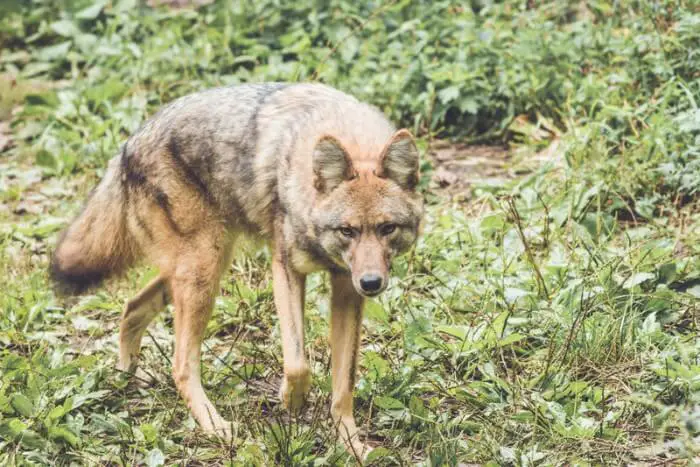
If they eat carrion, then even discarded fast food will tempt hungry coyotes to take the risk of getting close to human habitations. If so, cats and other pets will likely seem easy pickings also.
In Native American myths, the coyote is seen as an astute and tricky, intelligent animal. It is correct to assume that is the case with modern day coyotes.
They are quick to adapt to new environments and opportunities. A lot of rural or suburban communities that border on coyote territory will have stories about encounters between coyotes and pets; it’s inevitable.
It is thought that more attacks take place during the breeding season, which is between February and March, and that has yet to be proven, but coyotes will attack cats that come too close to their dens or young.
Coyotes are closely related to foxes – read our article on foxes and the danger they present to cats.
Coyote studies have been local or regional, so there isn’t an overall picture of coyote behaviour. Security cameras and videos have captured many of these urban incursions.
If you are wondering ‘do coyotes eat cats’, then the best bet is to contact local animal welfare or wildlife organizations near you.
Coyotes as Predators
Coyotes are known as carnivorous hunters, but they are also scavengers too.
They will gladly consume roadkill. Normally, their diet consists of small mammals, herbivores such as rabbits and rodents, but they will also eat amphibians, reptiles and even fish.
They are both fast and agile. Coyotes can leap quite high too. As opportunists, coyotes do eat cats, but cats don’t figure normally in a coyote’s diet.
Cats are more likely to be victims of opportunity.
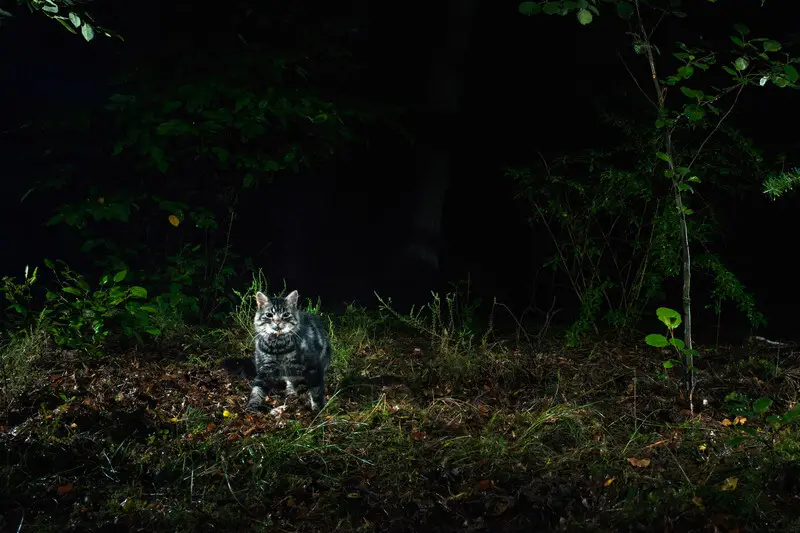
About three to five pets attacked by coyotes are brought into the Animal Urgent Care hospital of South Orange County (California) each week, the majority of which are dogs, since cats typically do not survive the attacks.
Wikipedia
Cats vs Coyotes
Without doubt a confrontation between a coyote and a cat can only have one winner, the coyote. Despite cats being very agile and fast, coyotes are just as fast.
A cat may have the advantage of being able to jump and climb out of reach, but only if they get the chance.
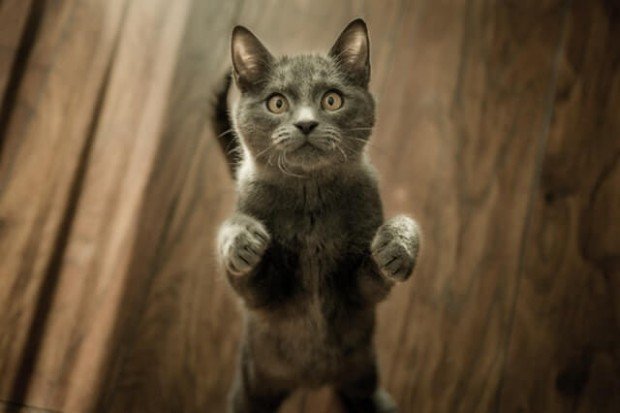
Coyotes can leap quite high too. Some stories claim that coyotes can jump 6 foot fences! A cat’s sharp claws are no defence against a surprise attack. Although cat can put on an impressive spurt of speed, in a chase, a coyote will easily overtake a cat.
These are opportunistic carnivores – whatever is available and relatively easy to find and/or catch, coyotes will eat.
Hunterhunts.com
Cats at Risk
Of course, most cats are quite sensitive to their surroundings, even when they seem to be asleep. Catching a cat off guard outside of their own territory isn’t easy.
Unfortunately, cats become old and slow over time. Old cats that can’t move so fast and those that are losing their sight or hearing are vulnerable to a surprise attack.
Also, any cat that is infirm or crippled. Kittens may be at risk because of their lack of experience of the dangers of the world. Even those that have become too overweight to move quickly if they see a coyote are at risk.
Cats are known as hunters but when coyotes come on the scene, cats who go outside become the prey.
Paul Krausman, University of Montana
Also Read:
Do Mountain Lions Eat Cats?
Do Bears Eat Cats?
How to Keep Coyotes Away
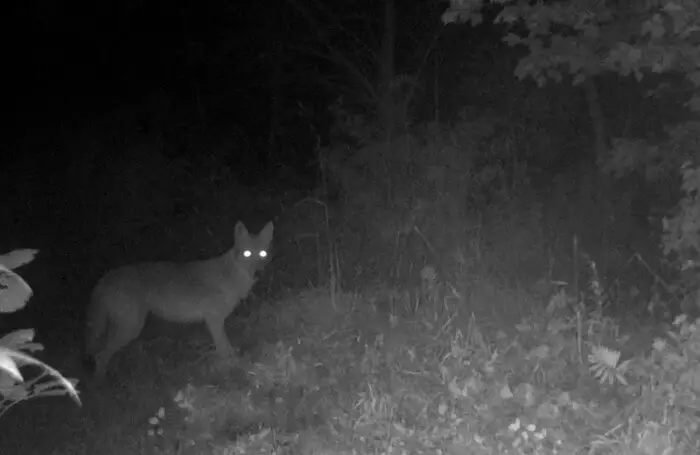
- Don’t let your cat go out at night.
- Don’t leave pet food out overnight.
- Don’t leave any pets, not just cats, out at night
- Secure all trash cans
- Put all animal waste products in closed containers, as their odor may attract coyotes.
- Yard or garden lights may act as a deterrent.
Coyotes are secretive animals, and studies have shown they can live for a long time in close proximity to dense human settlements without ever being noticed.
Humane Society
Other Pets at Risk
All household pets that kept outside or are allowed out are at risk from an opportunistic coyote attack. The favorite hunting times of coyotes are the twilight and dawn hours of the day.
These are also times which owners may let out their pets to do their business. Any pets left outside overnight should be kept in secure cages.
Take-away
It may be said that your cat may be vulnerable to coyote attack, but no more so than any other household pet.
What is certain is that more encounters between coyotes and pets, including cats, will take place because human habitation continues to encroach on the hunting grounds of coyotes.
Sources:
- Gehrt, Stanley and Seth P.D. Riley. 2010. “Coyotes (Canis latrans)” in Urban Carnivores: Ecology, Conflict, and Conservation. Gehrt, Stanley, D., Seth P.D. Riley, and Brian L. Cypher, editors. John Hopkins University Press.
As an Amazon Associate I may earn a small fee from qualifying purchases at no extra cost to you. This helps us run the site, so thanks for your support!

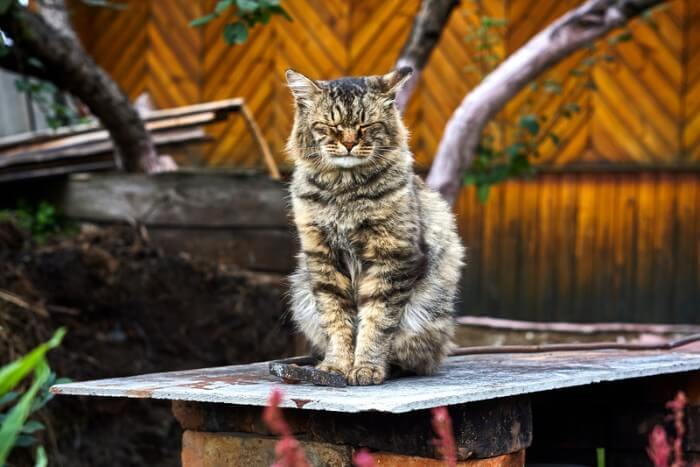
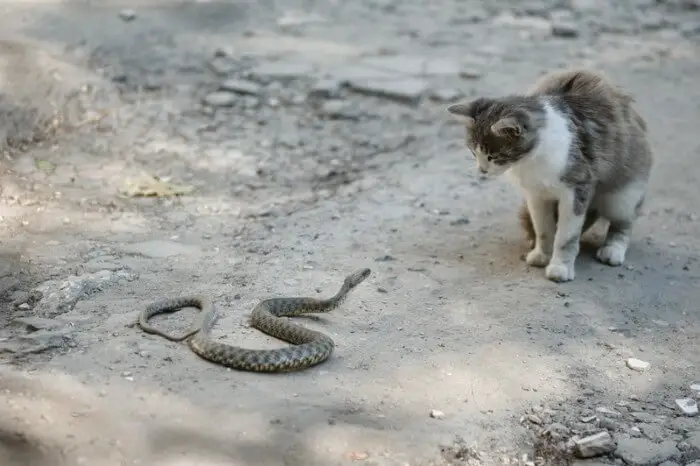
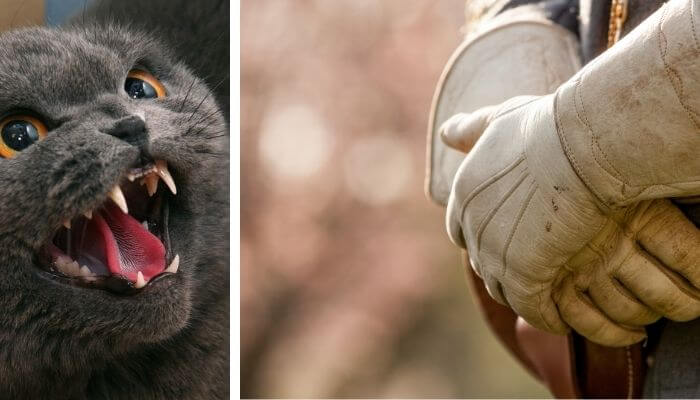
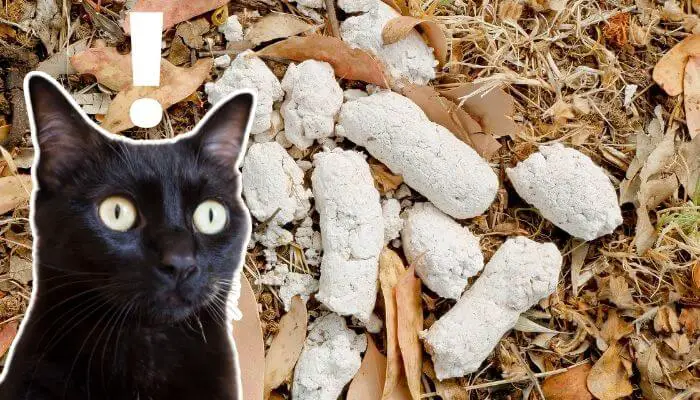

Say “Don’t worry though” to my cat Maki who was coyote breakfast two mornings ago, the two neighbor’s cats who never returned a week before that, and all the Nextdoor.com postings about coyote sightings and missing cats. I think the first line of this article is misleading or outdated. It’s time to worry. At least, here in California in the U.S.
Hi Missy,
so sorry to hear that, that’s truly awful.
Apologies about the wording of the article, in some areas, California included, Coyote attacks are all too common occurrences however in general they are fairly rare.
I’ve updated the article to read a bit better,
again sorry for your loss.